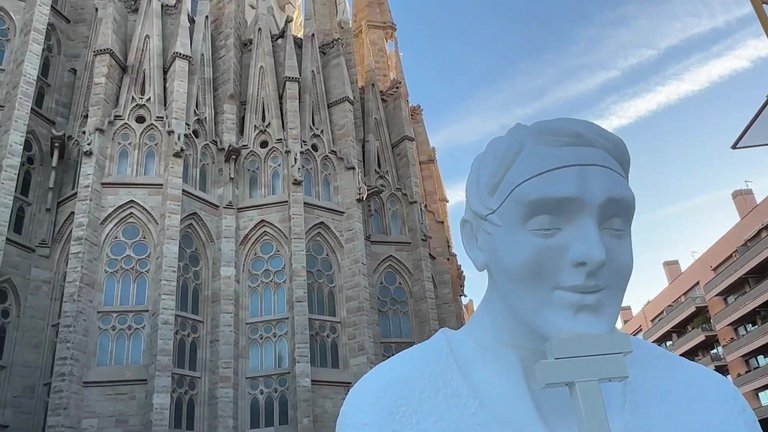
Hello dear travel enthusiasts. I visited the Basilica of La Sagrada Familia and today I want to introduce you to this incredible masterpiece more closely. Created by architect Antoni Gaudi, I've been here a few times before but never had the chance to talk about it in my posts. So today I wanted to share the details of my visit to Sagrada Familia because this structure is also known as a Bible written in stone and it did not earn this name for nothing. If you know what is where, everything falls into place.
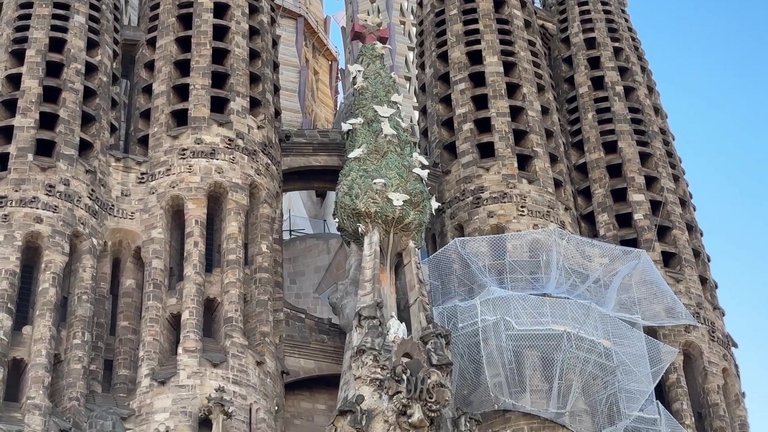
The church has a total of three facades. We started our tour from the Nativity Facade. Besides this there are also the Passion Facade and the Glory Facade. To talk a bit about its history, the first stone of Sagrada Familia was laid in 1882 and initially no one planned to build such a large church. But a year after the construction started, a new architect named Antoni Gaudi came and began working on this cathedral in 1883. This is how the construction of this magnificent structure started. We know that this place is the Temple of the Holy Family and let's examine what is on the Nativity Facade together. We went up and saw the tree. This tree is a cypress tree and it depicts saved souls in the form of white doves.
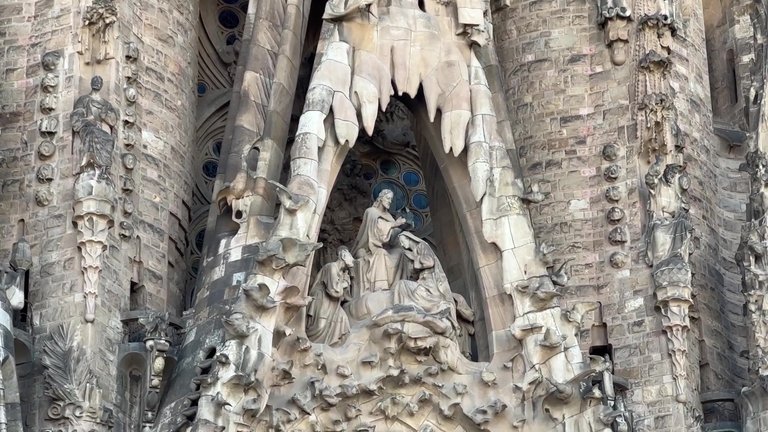
A bit further down we encounter the scene of the Assumption of Mary, which depicts the end of Mary's earthly life and her assumption into heaven. Here her son Jesus welcomes her in heaven and the scene of her coronation is depicted. Further down is the Annunciation scene, where Gabriel informs Mary of her pregnancy.
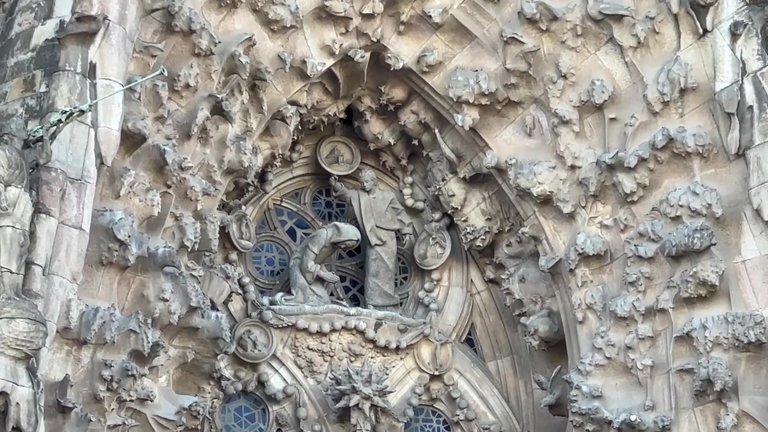
Finally we find the Holy Family consisting of Mary, Jesus and Saint Joseph. On the left side they are surrounded by shepherds and angels. There is a dreadful scene here: the massacre of the infants. King Herod fearing competition with the son of God, orders his soldiers to kill all children of appropriate age since he did not know the whereabouts of Jesus. Right next to it is the scene of Mary and Jesus' flight to Egypt. A bit above we see the wedding scene of Mary and Joseph.
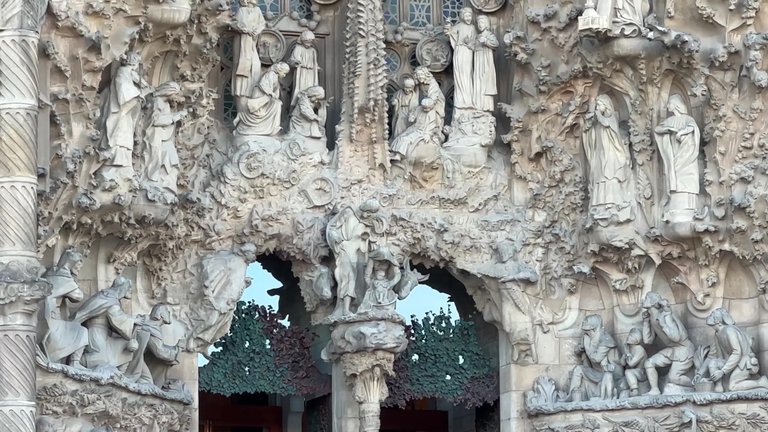
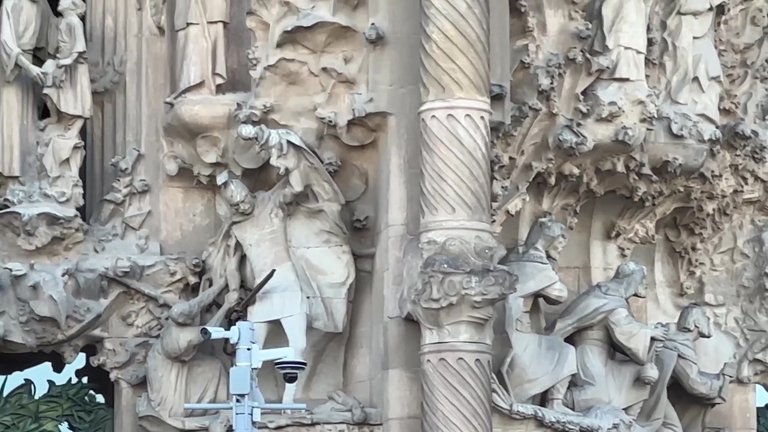
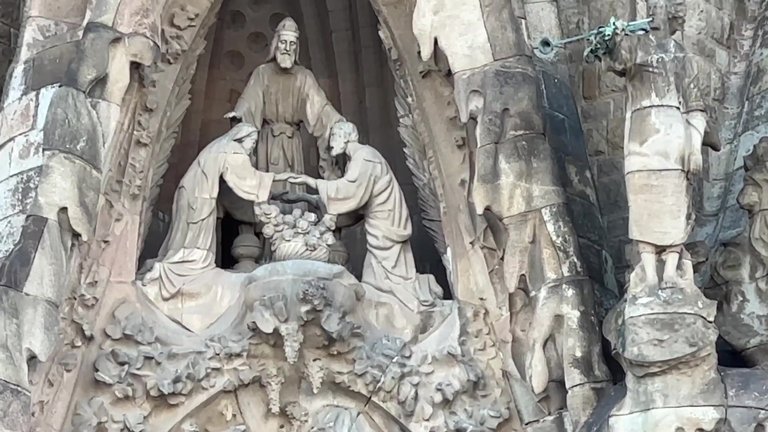
When we move to the right side of the Nativity Facade.It is dedicated to Mary and here we can see young Jesus depicted working in the workshop. These magnificent doors are essentially a passage code through the portal of Mary and they are incredibly beautiful doors that you would want to touch. All details are made in relief.
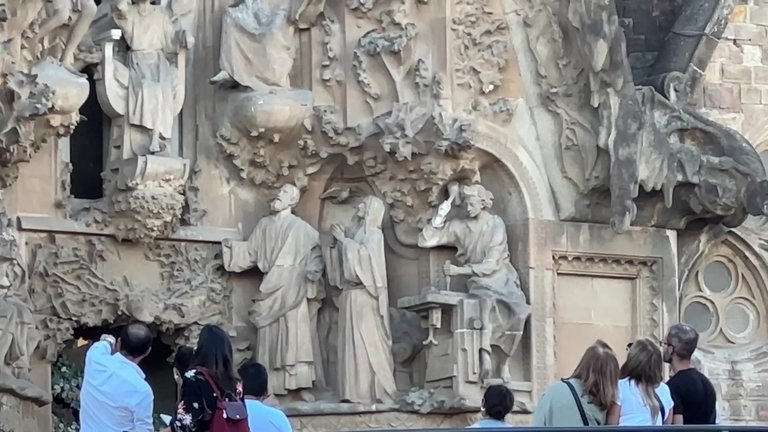
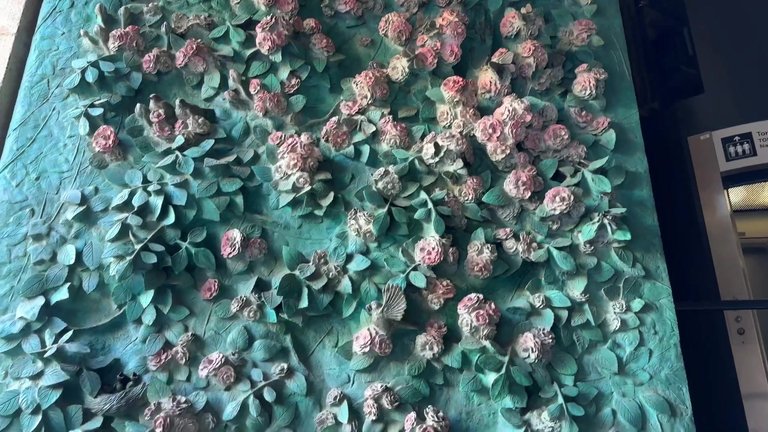
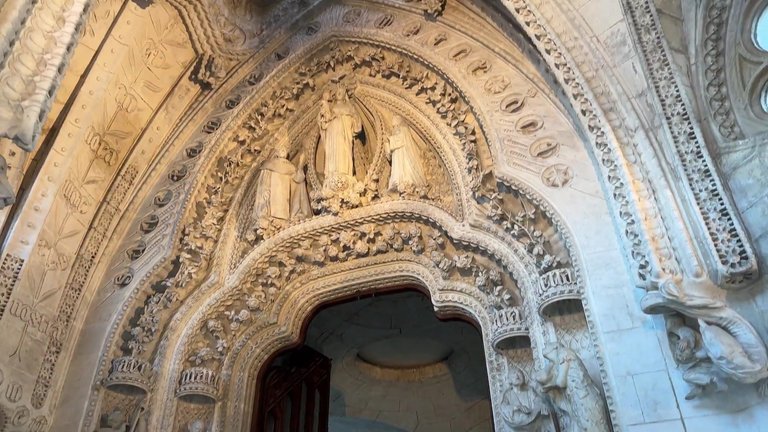
A bit further ahead two sins are depicted. The first sin is prostitution. You can see a kneeling girl and a devil holding a bag of money behind her. An incredible relief. On the other side we see another sin: the anarchist is given a bomb by the devil himself, Satan. This illustrates that everything is related to sin. The devil is depicted with a long nose.
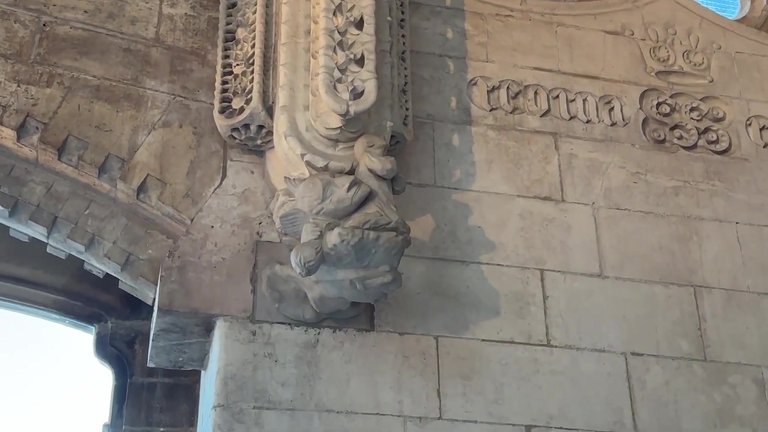
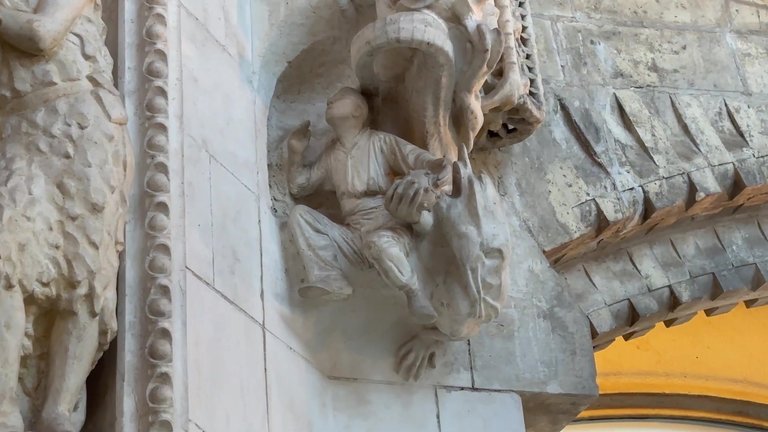
There is also a very important scene. It is believed that Gaudi foresaw his death and here he is depicted dying, being seen off by the Holy Family, Mary, Joseph and little Jesus.
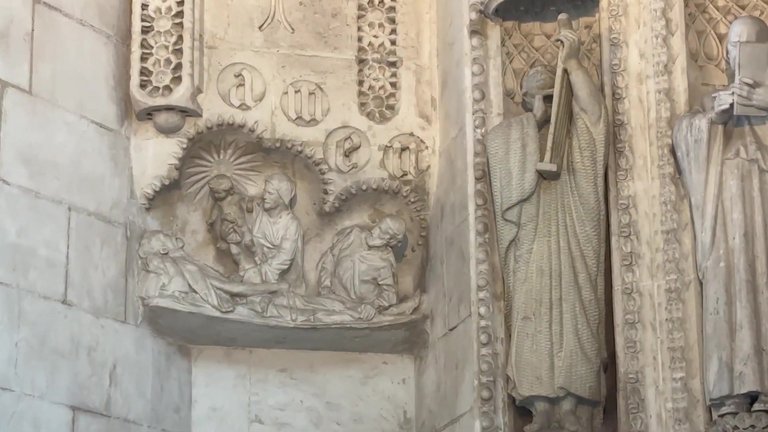
Another engraved door shows us the swiftly moving creatures of natüre. Each creature has a pair, insects, flies, worms, all in pairs.
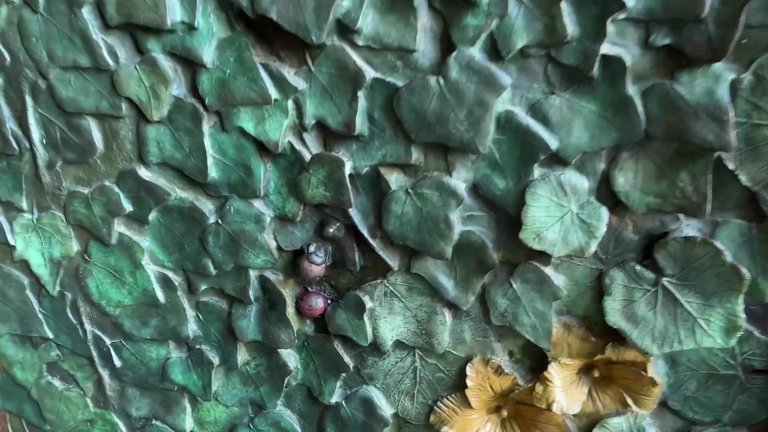
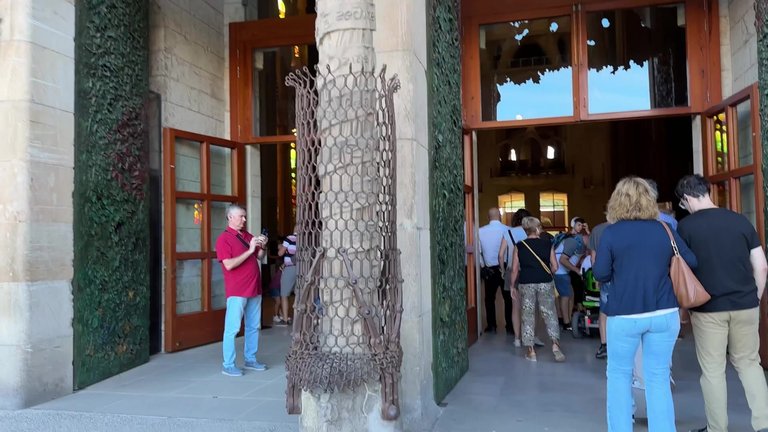
Then we entered through the Nativity Facade. In front of us were the doors depicting the Virgin Mary. The temple is filled with light and Gaudi's most important idea was to build a temple filled with light. His ingenious column solutions with columns bearing the main load, allowed him to realize this idea.
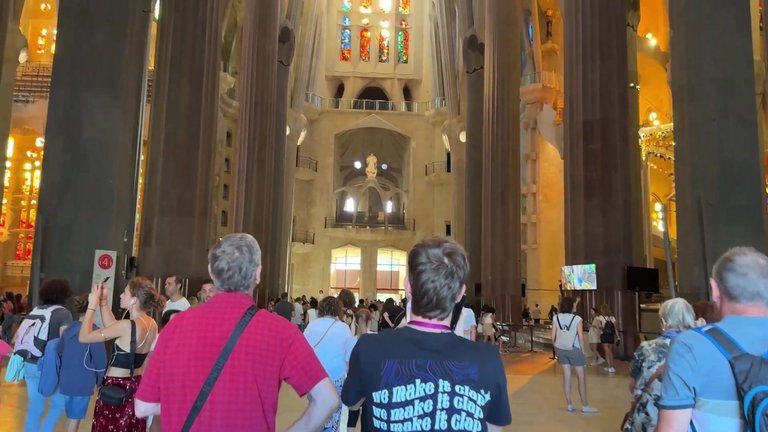
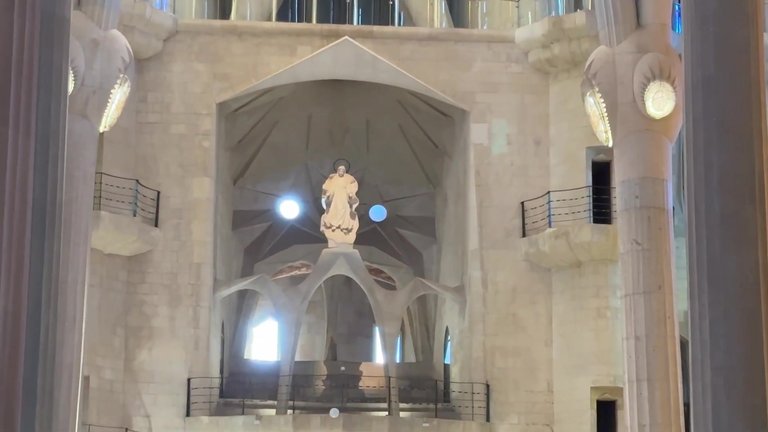
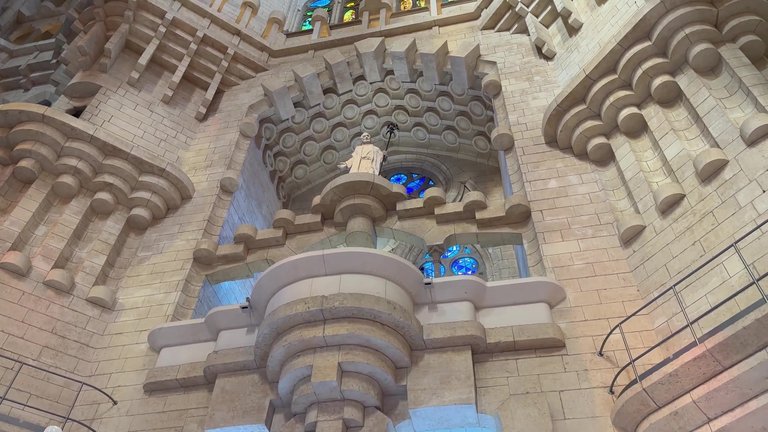

The stained glass windows on the east facade are in cool tones, while those on the west facade are illuminated in warm tones where the sun's rays come in.

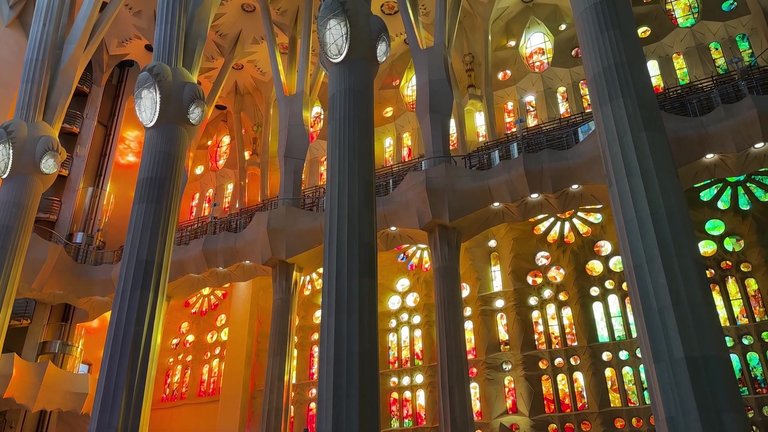

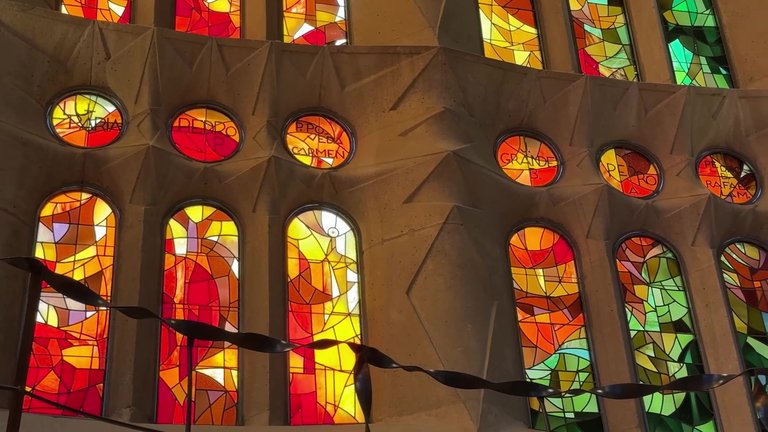
We approached the next main entrance the Glory Facade and saw the statue of Saint George, the protector of Catalonia. There is also a photo above the doors with the Lord's Prayer written in various languages.
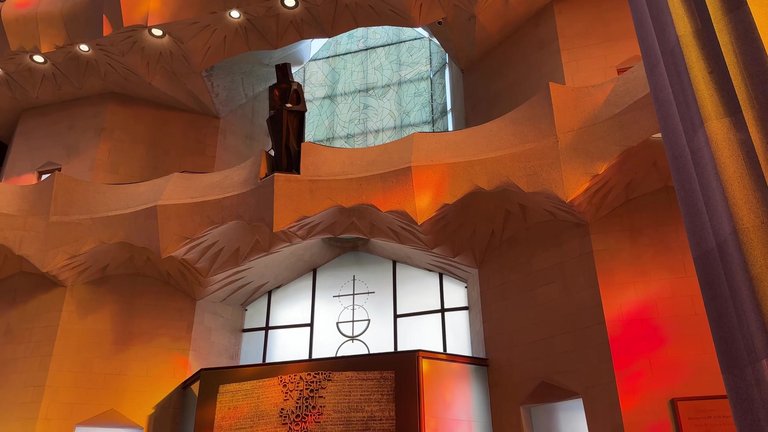
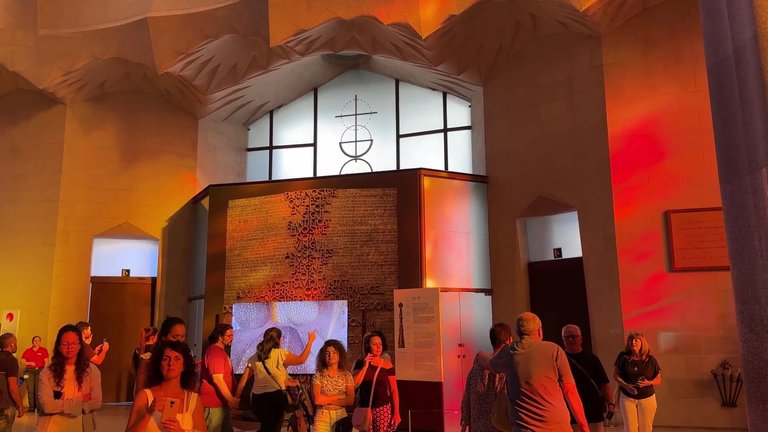
Inside the temple there are many monitors, including screens showing the first restoration of the bell towers built in 1930. One monitor allows us to take a virtual tour of the chapel that began construction in 2022 and shows us what the dome looks like. The play of light shows how light is distributed inside the temple on this monitor. But as we went a little further we reached the altar area.
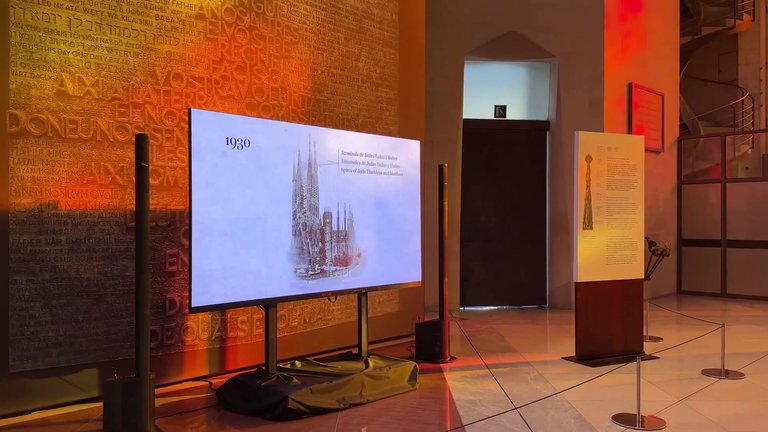
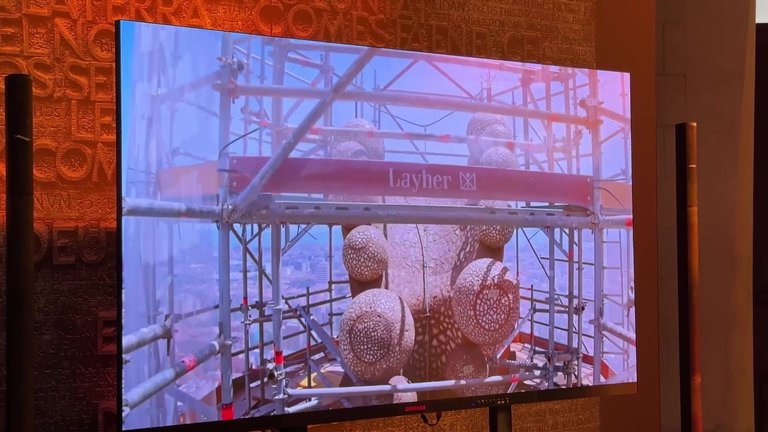
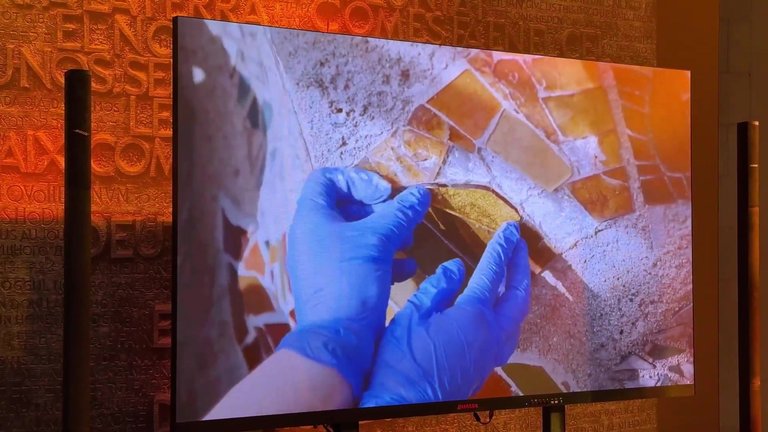
Passing by the columns. There are a total of 36 columns in the temple and the highest column is about 22 meters high. In the altar area we can find the church where Antoni Gaudi is buried. Anyone who wishes can visit this church for free.
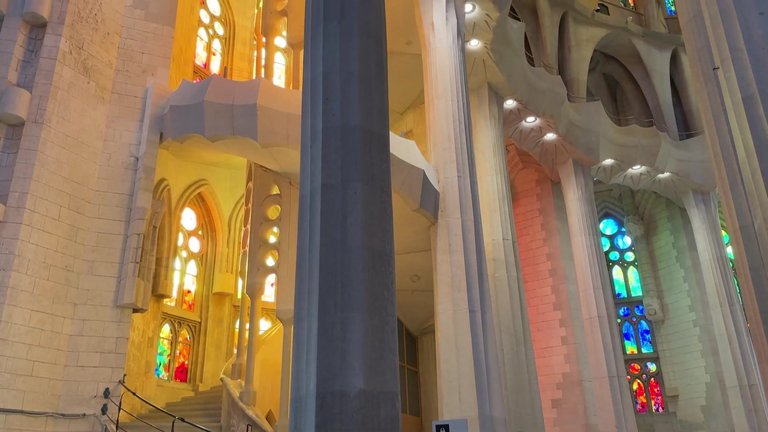
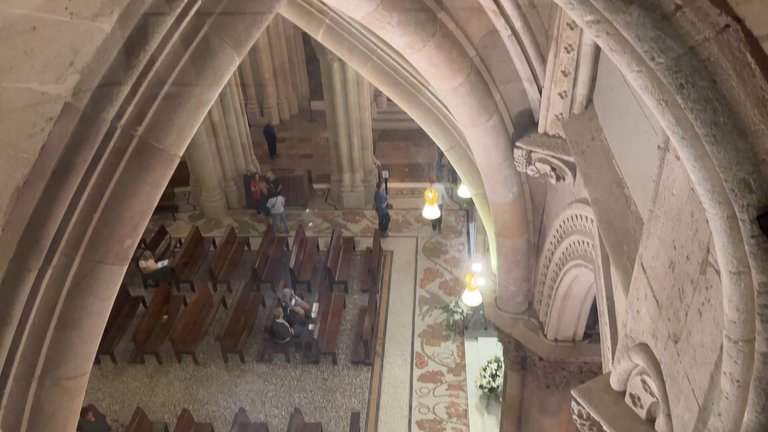
We saw a replica of the black Madonna from Montserrat Mountain placed in the church. The original Madonna is located on Montserrat Mountain. There is a copy of her in this church.
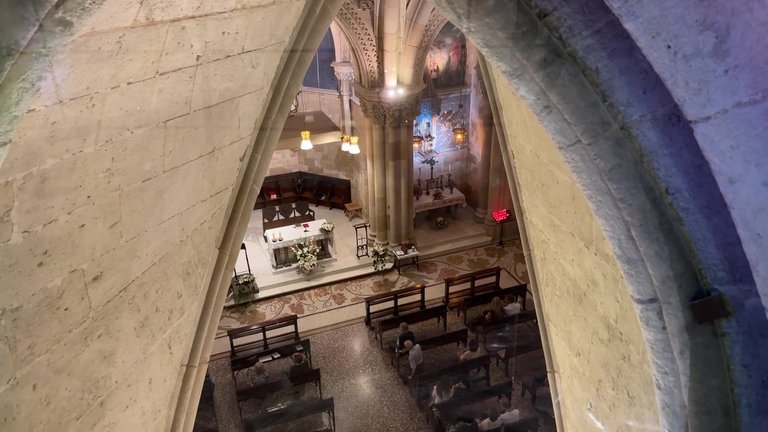
You can enter the museum through the Passion Facade and there is no need for an additional ticket. Inside there is a large exhibition where you can explore the history of not only Sagrada Familia but also other architectural works by Antoni Gaudi.
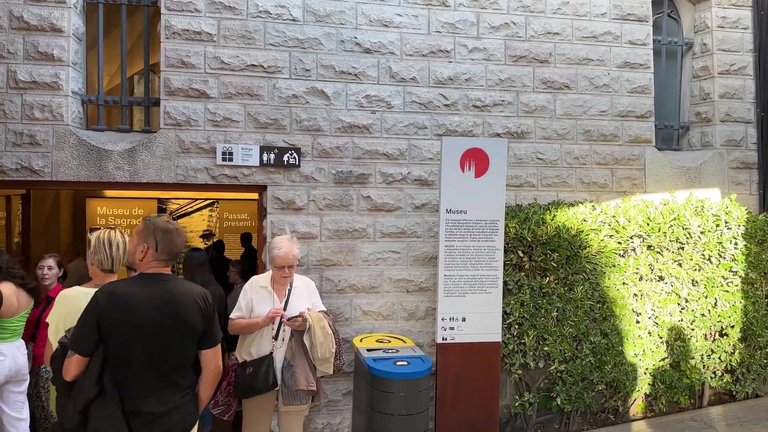
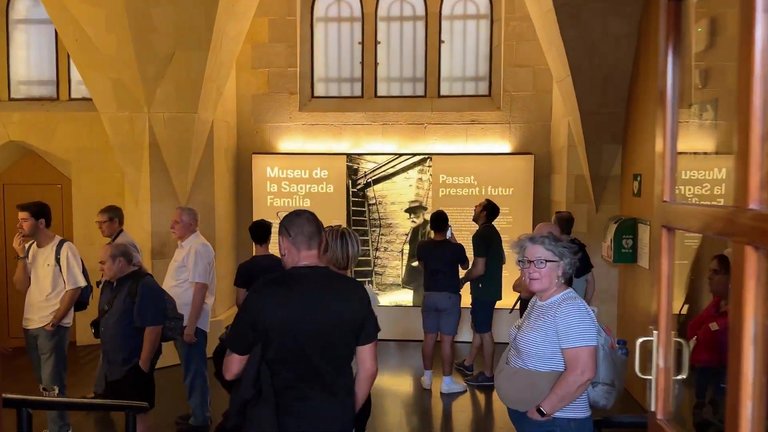

One of the interesting objects is a model considered to be Antoni Gaudi's first three-dimensional building model. Using strings and bags Gaudi experimentally calculated the load on the walls and columns.

A graphic shows all the architects who have worked on the construction of Sagrada Familia at different times. The parts marked in yellow here indicate those yet to be built. There is still a lot of work to be done and the completion of this building is anticipated.
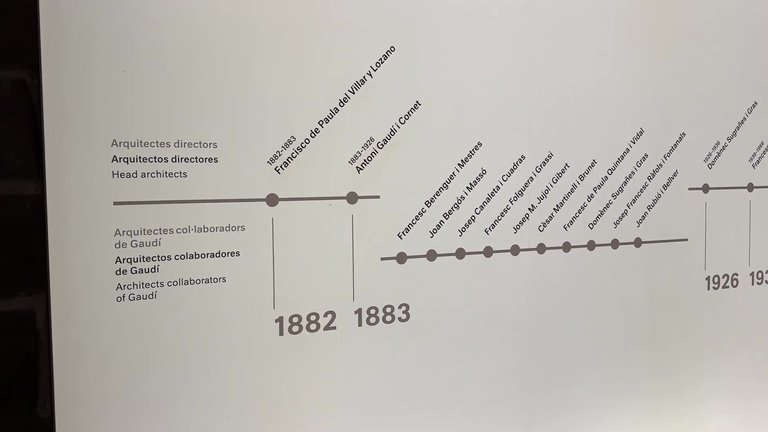
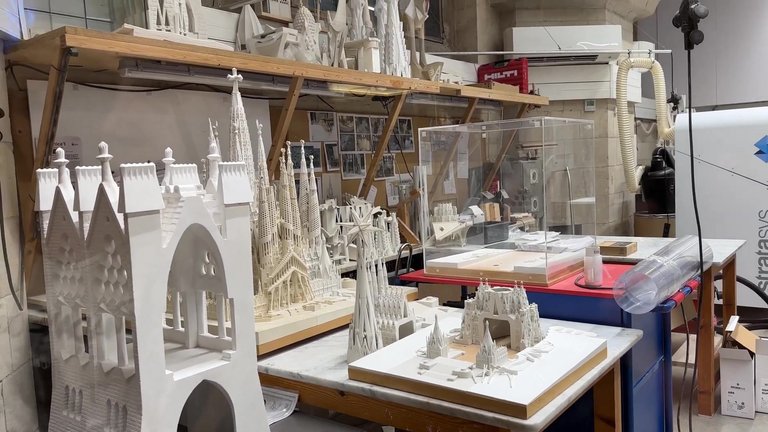
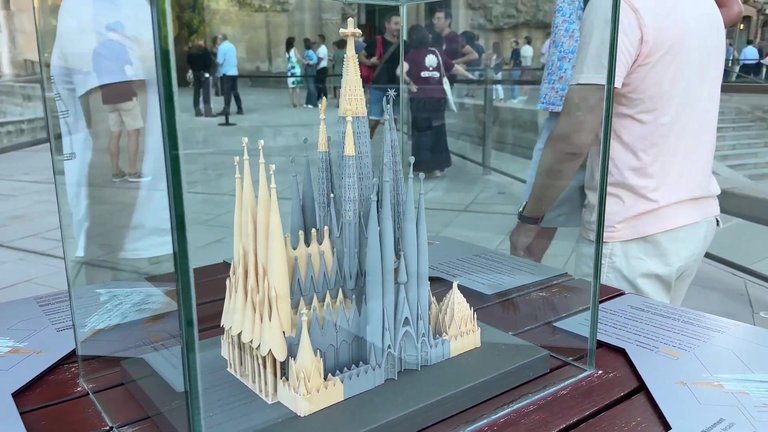
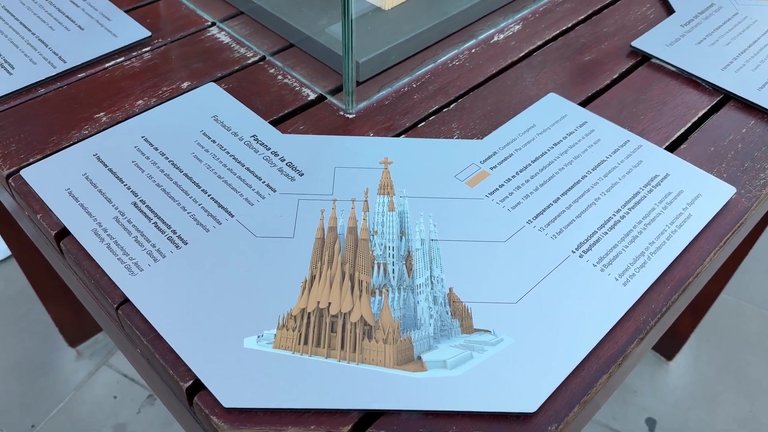
At the exit there are figures that will be placed on the two towers soon. And there is another figure showing these heads, which will soon adorn a tower.
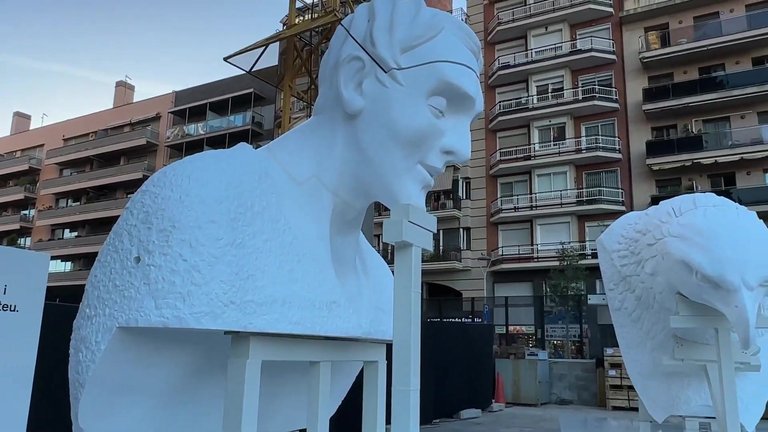
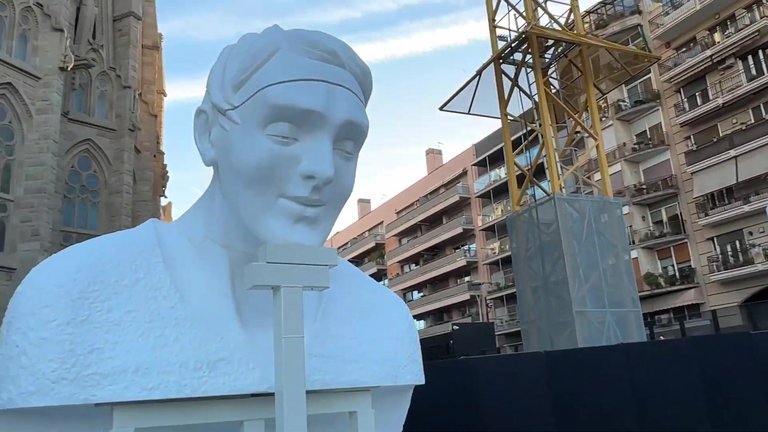
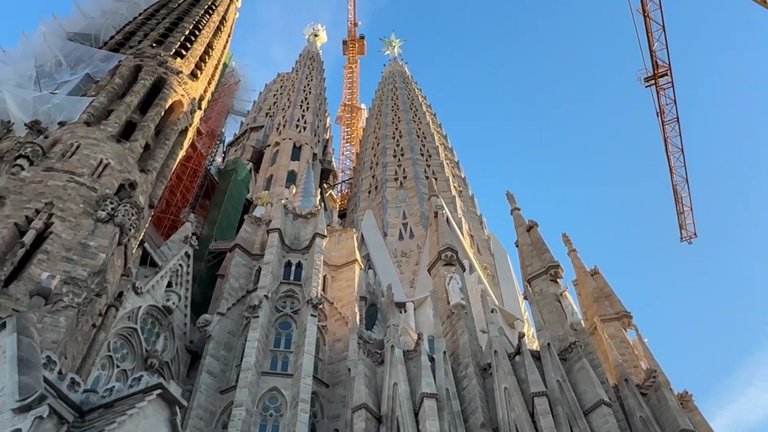
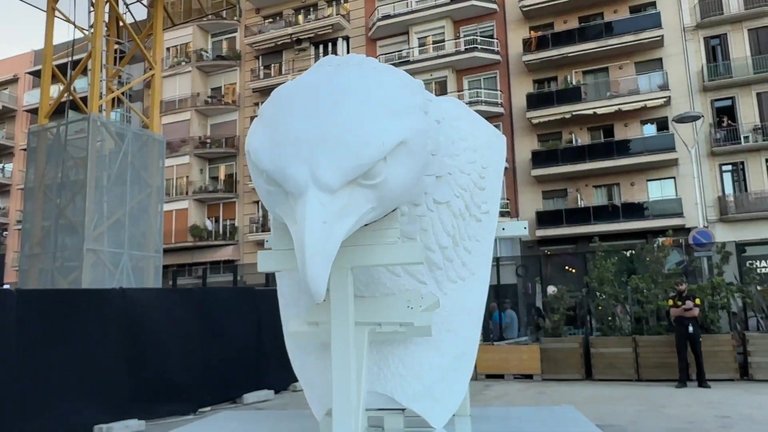
Our tour of Sagrada Familia ends here today. Thank you all very much for reading. I tried to tell you everything here as best as I could. That's all for today greetings to everyone.



